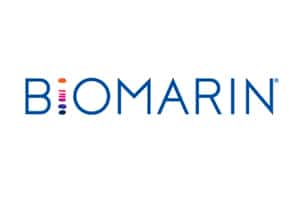
BioMarin has reported three-year data on its gene therapy for haemophilia A that sets up filings in Europe and the US, but also raises questions about its long-term value.
BioMarin’s therapy, called valoctocogene roxaparvovec or ‘valrox’, improved levels of clotting Factor VIII sufficiently in eight of 20 adults with severe haemophilia A in the phase 3 GENEr8-1 trial to meet the pre-specified criteria for regulatory review.
What spooked investors – and sent BioMarin’s share price down 5% – was that Factor VIII levels seemed to fall off over the course of the study, leading to concerns about the durability of the response to what was originally intended as a one-shot therapy.
The fall-off in Factor VIII levels had been seen at the two-year timepoint as well, and with levels continuing to decline some analysts have argued that the effect of valrox is wearing off, although reductions in bleed rates seem to be maintained over the three-year period.
Others, including SVB Leerink analyst Joseph Schwartz, suggest what is being seen is in fact a plateauing of the decline.
Observers might be split down the middle on the data, but there’s little doubt that if the gene therapy needs to be re-administered after a few years to maintain its efficacy that will have a bearing on how much BioMarin can charge for it.
Novartis is charging $2.1m for its one-shot spinal muscular atrophy (SMA) gene therapy Zolgensma, and while that has been accepted as reasonable by payers they may baulk at that level of pricing for a therapy that only lasts a few years. It also raises the question of whether re-administration of the gene therapy will be as effective.
All this is speculative of course, and for now BioMarin can celebrate meeting the criteria to take the results to regulators, something it says it will do in the third quarter of this year.
“These data confirm that valoctocogene roxaparvovec has the potential to profoundly impact the lives of people with severe haemophilia A through a sustained reduction in bleeds and Factor VIII usage,” said Hank Fuchs, the company’s head of global R&D.
“Importantly, we’ve now observed that maintenance of factor expression is a function of expression level and time,” he added, noting that “conservative statistical modelling” suggests that bleeding control will be maintained for at least eight years after dosing.
On a conference call, BioMarin chief executive Jean-Jacques Bienaimé said that a price of $1m per dose would make it comparable to the five-year cost of treating patients with Factor VIII replacement products.
All eyes will now be on rival haemophilia A gene therapies from Sangamo/Pfizer and Roche/Spark, which could have an opportunity to steal a march on BioMarin if they can show improved durability of effect.
Evercore ISI’s Josh Schimmer said that while valrox doesn’t appear to be a ‘cure’ for haemophilia A, represents “a decent start for gene therapy…and [BioMarin] remains in pole position for now.”




